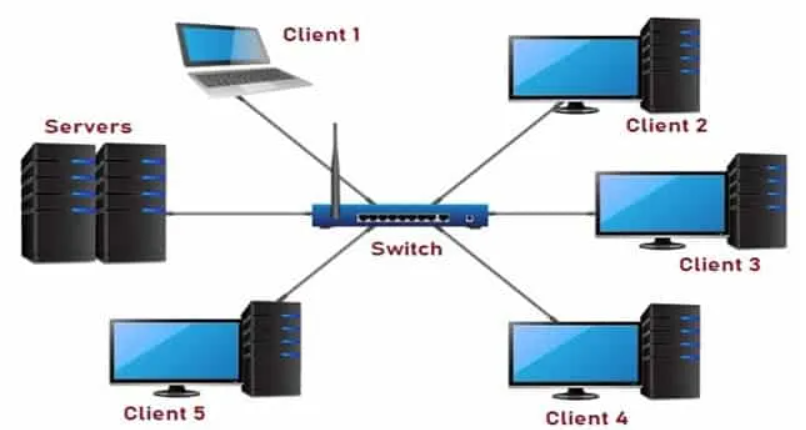Computer LAN networks on board Ships


If you’re responsible for the digital infrastructure on a vessel, you know how important it is to have reliable communication between different devices and systems on board. Computer LAN networks on board ships are crucial for the smooth operation of everything from the navigation systems to the crew’s communication and entertainment. But designing and implementing these networks on a vessel comes with unique challenges that must be considered.
Unlike the stable and predictable conditions of a factory or airplane, ships must navigate through constantly changing weather, tides, and currents. This means that the computer networks on board must be designed to withstand the elements and the vibrations and motion of the ship itself. Additionally, ships often travel in remote areas, far from traditional communication infrastructure, which means that the networks must be able to operate independently of external resources.
Another challenge for computer LAN networks on board ships is the need for cybersecurity. With modern vessels relying on automated systems and connectivity, the risk of cyber attacks is very real. The network must be designed with cybersecurity in mind to protect against unauthorized access or manipulation.
A computer LAN (local area network) is a network of devices that are connected together in a limited area. On a vessel, this would include all the computers, printers, and communication devices that are required for the operation of the ship. To create a LAN, you need a central hub or switch that allows the devices to communicate with each other. The LAN can be connected to external resources like the internet through a router or satellite link.
There are two main types of LANs that are used on board ships: wired and wireless. Wired LANs are more traditional, using physical cables to connect the devices to the central hub. These cables can be more reliable than wireless connections, but they can be more difficult to install and maintain. Wireless LANs use Wi-Fi or other wireless technology to connect the devices, which can be more convenient and flexible but may be less reliable and secure.
Designing and implementing a computer LAN network on board a ship requires careful planning and consideration. Here are some key steps to take:
The first step is to define your requirements. What devices and systems need to be connected to the network? How many users will be accessing the network? What is the bandwidth requirement? Do you need to consider cybersecurity? Answering these questions will help you determine what type of network you need and what equipment you’ll need to install.
Next, you need to choose your equipment. This includes the central hub or switch, the cables or wireless access points, and any additional hardware like firewalls or cybersecurity software. When choosing equipment, consider the size of your vessel, the number of users, and your budget.
Once you have your equipment, you need to install and test the network. This involves physically installing the cables or access points and configuring the central hub or switch. You’ll also need to test the network to ensure that everything is working properly.
Finally, you need to maintain and monitor the network. This includes routine maintenance like replacing damaged cables or updating software, as well as monitoring for cybersecurity threats or performance issues.
A computer LAN network on board a ship is a network of devices that are connected together in a limited area, like the computers, printers, and communication devices on a ship.
Ships need computer networks to support their operations and communications while at sea.
These networks can help improve safety, efficiency, and crew morale.
Some challenges of setting up a computer network on a ship include limited physical space, vibration, temperature and humidity changes, and potential interference from other electronic equipment.
Many types of devices can be connected to a ship’s computer network, including computers, printers, scanners, radios, GPS systems, and navigational equipment.
A ship’s computer network differs from a network on land in several ways, including the harsher physical environment, the need for specialized equipment and cabling, and the need for additional security measures.
Security concerns for a ship’s computer network can include hacking attempts, malware and virus infections, physical theft or damage to equipment, and unauthorized access to sensitive data.
To ensure reliable connectivity for a ship’s computer network, it is important to use high-quality equipment and cabling, conduct regular maintenance and testing, and ensure that the network is properly configured and secured.
Yes, a ship’s computer network can be remotely accessed and monitored using satellite or other communication systems. This can allow for real-time monitoring of equipment and data, as well as remote troubleshooting and maintenance.
Regular maintenance is required for a ship’s computer network, including updates and patches to software, testing and replacement of hardware components, and monitoring of network performance and security. It is also important to have contingency plans in place in case of network failures or other emergencies.
Our Specialization:
Click here to send Your Enquiry: service@seanav.org
This will close in 21 seconds